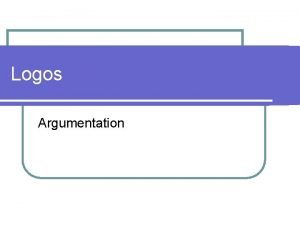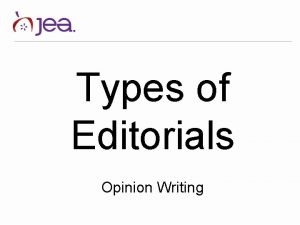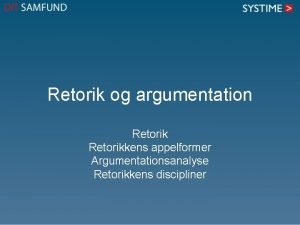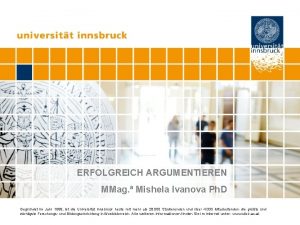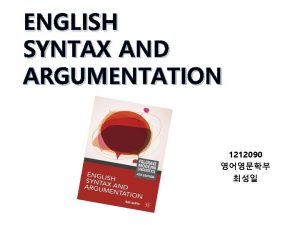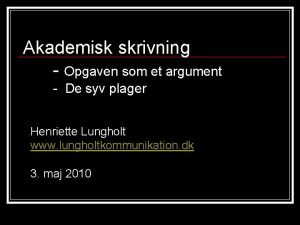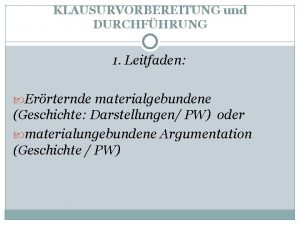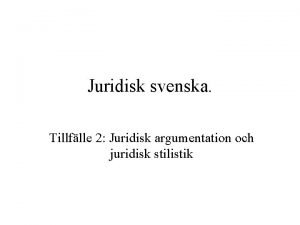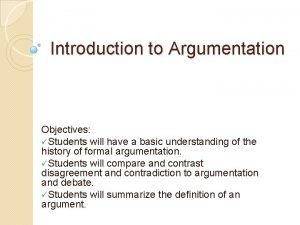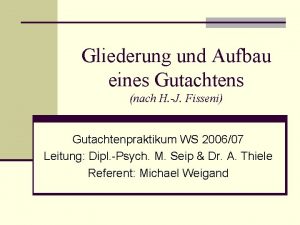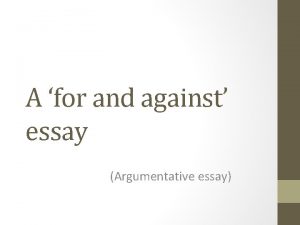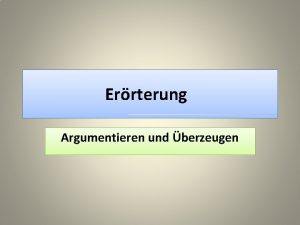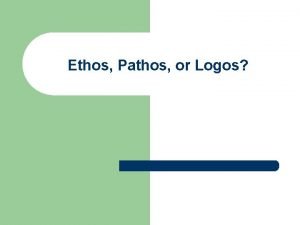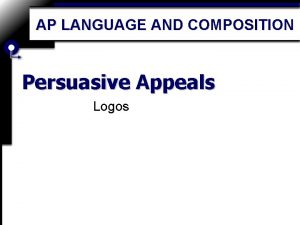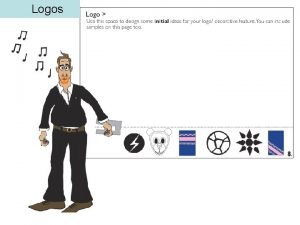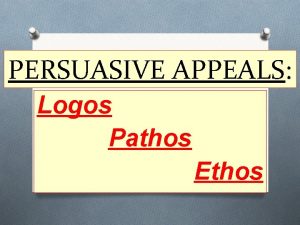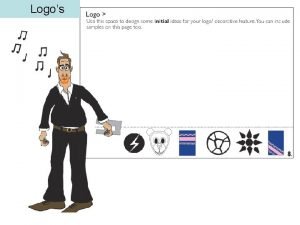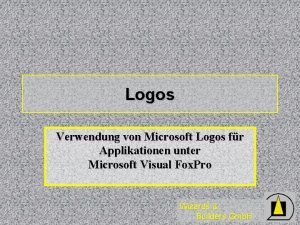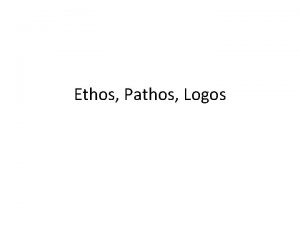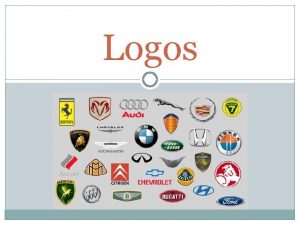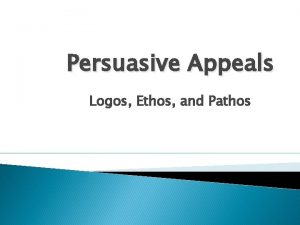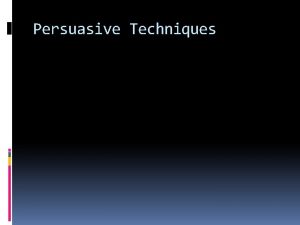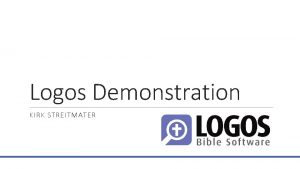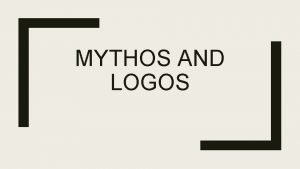Logos Argumentation ARGUMENTATION l Argumentation is a form




















- Slides: 20

Logos Argumentation

ARGUMENTATION l Argumentation is a form of instrumental communication relying on reasoning and proof to influence belief or behavior through to use of spoken or written messages

Presumption l Presumption identifies existing beliefs, policies, practices, or institutions l Presumption is determined by prevailing beliefs of the audience l Presumption is a decision rule that determines what the advocate must prove in testing the proposition as a hypothesis l Presumption only describes It does not judge the value or lack of value to the existing beliefs, practices, policies, or institutions presently occupying the ground

Burden of proof The advocate has the responsibility to prove the argument this is the burden of proof l In fulfilling the burden of proof, present beliefs and behaviors described by presumption are judged and evaluated based on the available evidence and an alternative pattern of thought or action is proposed. l

Prima Facie Case l The advocate has the responsibility of presenting prima facie case, one that stands at face value and is consistent and complete l The form and content of the argument determines its face value l A prima facie case must be both topical, within bounds and inherent, having; cause, permanence, and reform l Presentation of a prima facie case causes the suspension of presumption unless it is successfully challenged

Propositions l The proposition is a statement that identifies the argumentative ground and points to a change in belief or behavior

Types of Propositions l Propositions of Fact l Propositions of Value l Propositions of Definitions l Propositions of Policy

Rules of Definition: l The Inclusionary Rule l The Exclusionary Rule l The Adaptation Rule l The Neutrality Rule l The Specificity Rule l The Clarity Rule

Terms needing Definition l Equivocal terms l Vague terms l Technical terms l New terms l Coined terms

The Toulmin Model

The Toulmin Model Primary Triad Claim: is a conclusion that does not stand alone but requires further proof before the audience is willing to accept it as verified l Grounds: are information of fact or opinion used to provide verification for the claim; commonly known by the generic label evidence l Warrant: is the reasoning that justifies the mental leap from grounds to claim, certifying that given the grounds, the claim is true or probable l

The Toulmin Model Secondary Triad l Backing: provides the 'credentials' that help establish the legitimacy of the inferential leap from grounds to claim l Qualifiers: show the amount, or degree, of force that a claim possesses l Rebuttals: limit claims, showing circumstances under which they may not be true and anticipating objections to the claim

Types of Evidence l Examples and illustrations l Statistics l Scientific l Artifacts l Premises l Opinions evidence

Tests of Evidence Examples and illustrations l Source qualifications l Data accuracy l Originality of observation l Recency of observation l Attitude of the observer

Tests of Evidence Statistical evidence l Source reliability, l Statistical accuracy l Comparable units l Data significance

Tests of Evidence Scientific Evidence l Generalizability of setting and subjects l Variable control and manipulation l Consistency with other findings

Tests of Evidence Artifacts l Genuineness l Representativeness

Tests of Evidence Premises l Is there reason to believe that circumstances will not change in such a way as to invalidate the premise

Tests of Evidence Opinions l Source Expertise, l Source Bias l Factual basis of the opinion

General Tests of Evidence l l l Accuracy Recency Quality Sufficiency Representativeness, l l l Clarity, Consistency Internal Consistency External Relevance Audience acceptability
 Logos argumentation
Logos argumentation Ekologi berasal dari kata oikos dan logos logos berarti
Ekologi berasal dari kata oikos dan logos logos berarti Different types of editorials
Different types of editorials Argumentationsanalyse eksempel
Argumentationsanalyse eksempel Types of deductive reasoning
Types of deductive reasoning De123rf
De123rf English syntax and argumentation 연습문제 답
English syntax and argumentation 연습문제 답 Abstraktionsstigen
Abstraktionsstigen Tierversuche argumentation
Tierversuche argumentation Sanduhr-prinzip
Sanduhr-prinzip Eine argumentation
Eine argumentation Juridisk argumentation
Juridisk argumentation Introduction to argumentation
Introduction to argumentation Comment englisch
Comment englisch For and against essay linking words
For and against essay linking words Argumentation
Argumentation Argumentation
Argumentation Linking words argumentation
Linking words argumentation Argumentation
Argumentation Affirmative present continuous
Affirmative present continuous How do you find vertex
How do you find vertex
